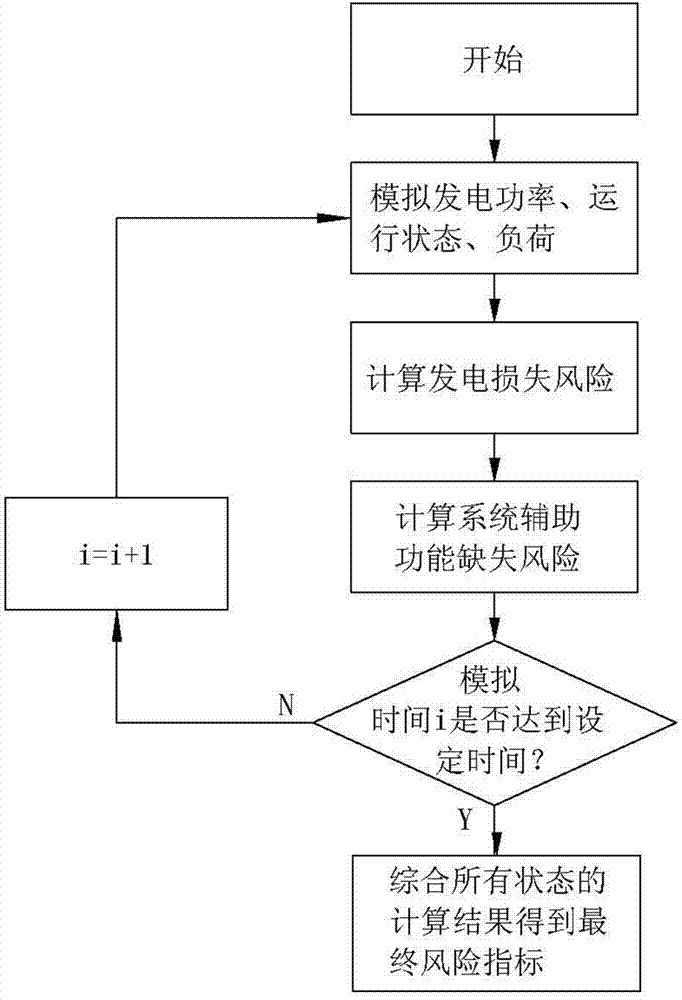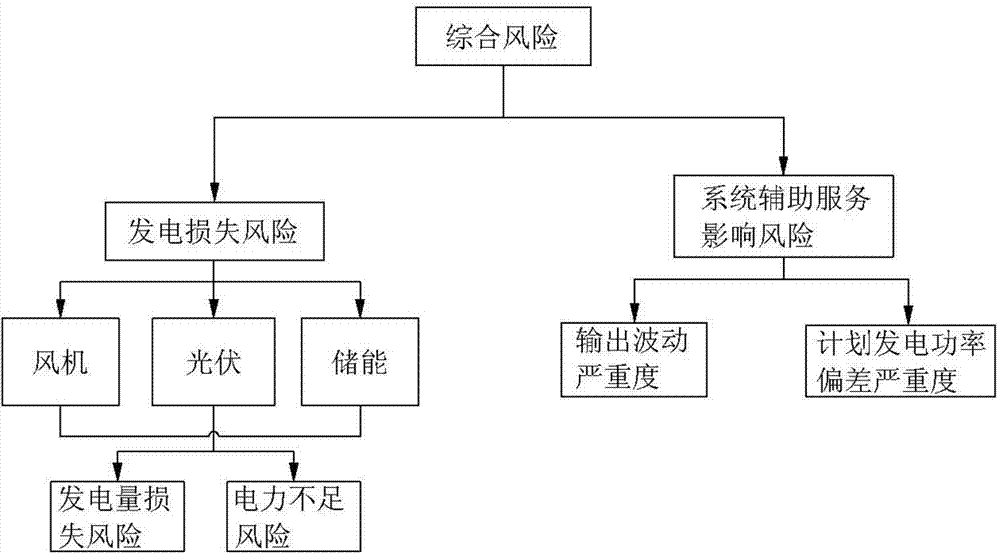Evaluation method for risk of wind power, photovoltaic power generation and energy storage combined power generation system
A technology of combined power generation, wind and solar storage, applied in information technology support systems, electrical digital data processing, special data processing applications, etc., to achieve accurate and comprehensive quantitative results
- Summary
- Abstract
- Description
- Claims
- Application Information
AI Technical Summary
Problems solved by technology
Method used
Image
Examples
Embodiment Construction
[0012] The technical solution of the present invention will be further described in detail below according to the drawings in the description and in combination with specific embodiments.
[0013] see figure 1 , figure 1 The flow chart of the risk assessment method for the wind-solar-storage combined power generation system provided by the present invention includes the following steps:
[0014] Step S10, obtaining the reliability statistical data of the wind-solar-storage combined power generation system, and calculating the reliability parameters of the main equipment according to the reliability statistical data;
[0015] Step S20, establishing a reliability model, a power generation model and a load model;
[0016] Step S30, obtaining the power time series, operating state time series and load time series of the wind-solar-storage combined power generation system;
[0017] Step S40, calculating the power generation loss risk and the system auxiliary service loss risk of...
PUM
 Login to View More
Login to View More Abstract
Description
Claims
Application Information
 Login to View More
Login to View More - R&D
- Intellectual Property
- Life Sciences
- Materials
- Tech Scout
- Unparalleled Data Quality
- Higher Quality Content
- 60% Fewer Hallucinations
Browse by: Latest US Patents, China's latest patents, Technical Efficacy Thesaurus, Application Domain, Technology Topic, Popular Technical Reports.
© 2025 PatSnap. All rights reserved.Legal|Privacy policy|Modern Slavery Act Transparency Statement|Sitemap|About US| Contact US: help@patsnap.com


